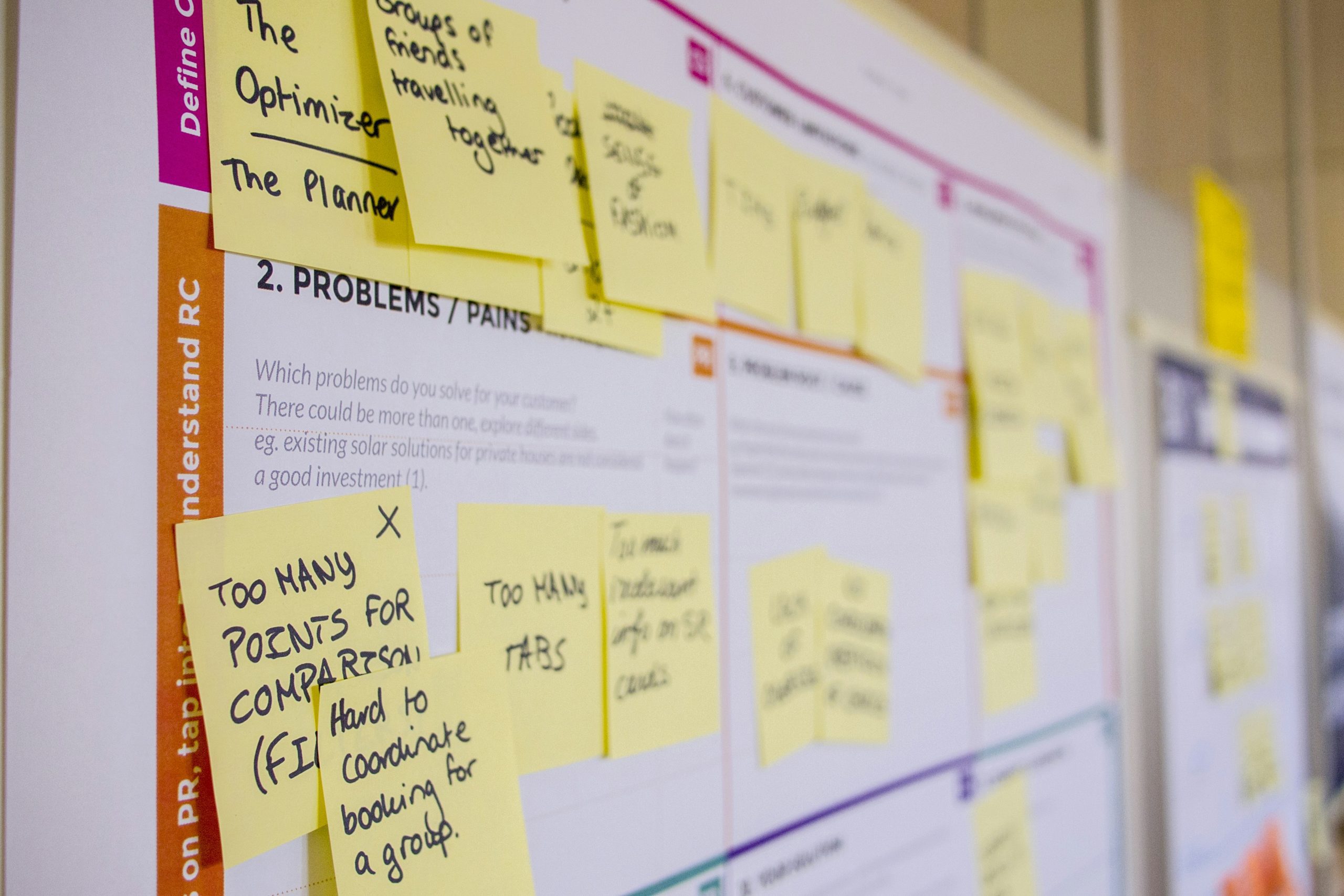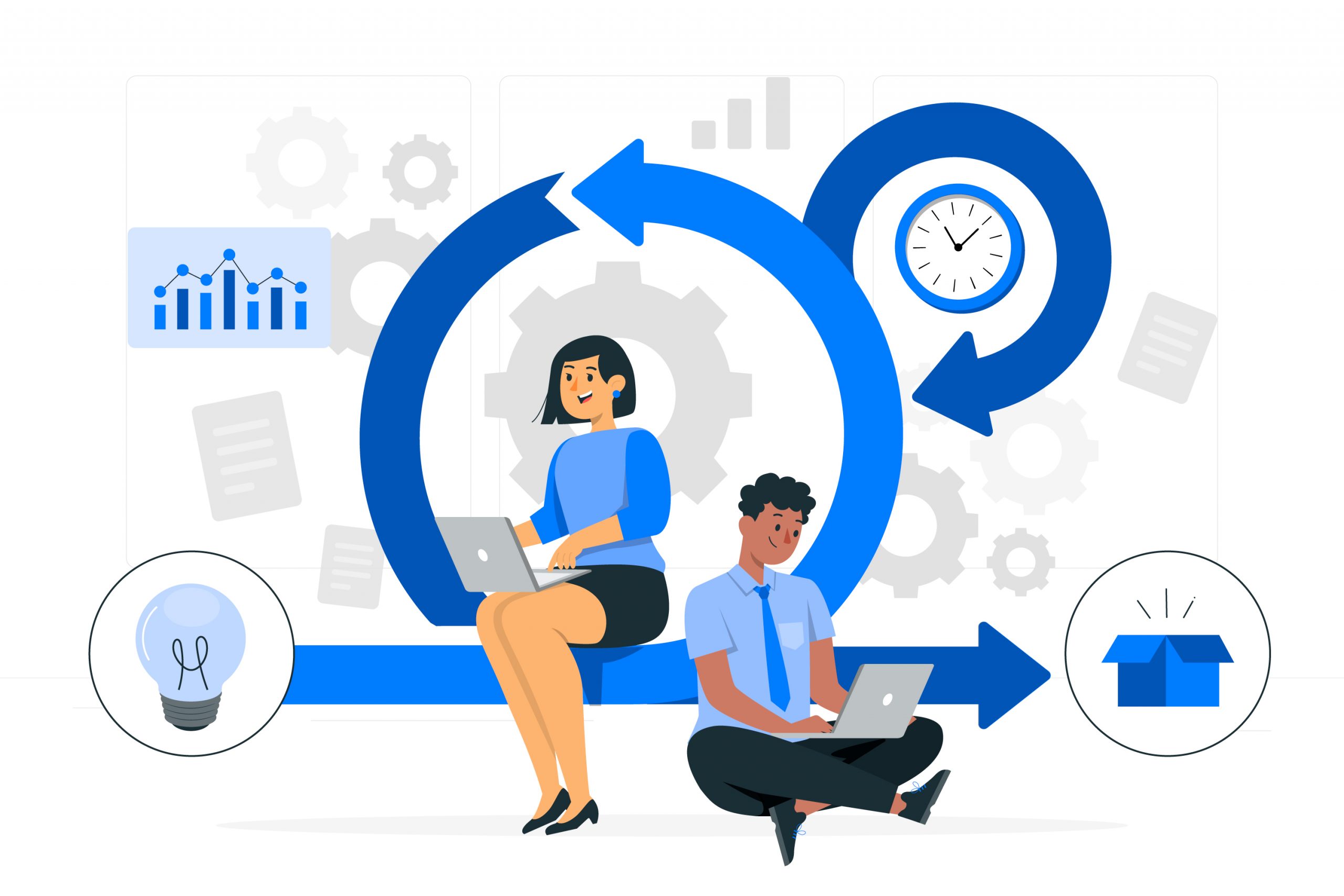Understanding Software Development Life Cycle (SDLC) Models
Software Development Life Cycle (SDLC) is a systematic approach used in software development projects to ensure the creation of high-quality software that meets client requirements. From the foundational stages like feasibility study and planning to the advancements of Agile methodologies such as Scrum and Kanban. In this comprehensive guide, we delve into the evolution of SDLC, uncovering the transition from traditional models to the approaches of Agile development.A structured SDLC involves several stages and additional components, each contributing to the overall success of the product engineering process.Stages of SDLC :1. Feasibility Study: Before the inception of a project, a feasibility study is conducted to assess technical, economic, and operational viability, ensuring alignment with organizational goals and the feasibility of a certain project.2. Planning: This initial phase involves defining project goals, scope, timelines, and resource allocation. Stakeholders collaborate to establish a clear roadmap for the project.Depending on the project size different stakeholders may get involved, for a project of a larger magnitude would include:Clients/Customer RepresentativesProject ManagersDevelopment TeamQuality Assurance/TestersBusiness AnalystsEnd UsersExecutive LeadershipMarketing and Sales TeamsLegal and Compliance TeamsSupport and Maintenance Teams3. Requirement Gathering and Analysis: During this stage, requirements are gathered with the support of Business and tech teams. These teams interact with stakeholders to understand their needs and expectations of the software. The requirements are then analyzed and multiple iterations are done to make them ready for the design process.This process can take up to months based on the levels of clarity, availability of resources, scope of the project, and timelines.4. Design: The design phase creates a blueprint for the software’s architecture, user interface, and user experience (UI/UX). Software architecture refers to the structure or framework of a software system. It outlines how various components of the software interact with each other, how data flows within the system, and how different modules or layers are organized. It includes the key components, functionalities, and relationships, to ensure scalability, maintainability, and performance.5. Prototyping: Some SDLC models may include prototyping to create a preliminary version of the software, allowing for early feedback and requirement refinement.6. Implementation: Also known as the coding phase, this step involves writing code based on the design specifications. Developers integrate various components and functionalities. Key activities include coding, integration, database development, and continuous testing. Configuration management tools, code reviews, and documentation are essential for code consistency and understanding. Deployment planning, performance optimization, and security implementation are also crucial aspects of the implementation phase.7. Version Control: Version control is a system that tracks changes to files and documents over time, allowing multiple contributors to collaborate on a project while keeping track of different versions of the files. It helps manage code or document revisions, track changes made by different team members, revert to previous versions if needed, and maintain code integrity and collaboration. Version control systems also facilitate collaboration, code review, and merging changes from multiple contributors.Several version control tools are available, each with its features and capabilities. Some popular version control tools include:GitSubversion (SVN)MercurialPerforceMicrosoft Team Foundation Version Control (TFVC)Apache Subversion (Apache SVN)8. Testing: Quality assurance is paramount in SDLC. Testing teams conduct various tests such as unit testing, integration testing, and user acceptance testing to identify and rectify defects.9. Deployment: Once the software passes testing, it is deployed to production environments for end-users to access and utilize like:Amazon Web Services (AWS)Microsoft AzureGoogle Cloud Platform (GCP)HerokuDigitalOceanKubernetesDocker Swarm10. Documentation: Comprehensive documentation, including technical documents and user manuals, aids in the development, testing, deployment, and maintenance phases.11. Risk Management: Identifying and mitigating risks is an integral part of SDLC. Risks can be categorized into various types, such as technical risks (e.g., software bugs, compatibility issues), project risks (e.g., scope creep, resource constraints), business risks (e.g., market changes, regulatory compliance), and external risks (e.g., third-party dependencies, geopolitical factors).12. Compliance and Regulations: Adherence to regulatory requirements, security standards, and legal frameworks is vital, ensuring the software meets industry standards and protects user data. Hence the teams work towards mitigating any losses (monetary or goodwill) that can occur in the future.13. User Training and Support: Providing training materials, user guides, and support mechanisms aids in ensuring smooth adoption and usage of the software for the end-users.14. Post-Implementation Review: A post-implementation review (PIR) helps evaluate the project’s success, gather feedback, and identify lessons learned for future improvements.The evolution of Software Development Life Cycle (SDLC) models encompasses a broad range of approaches, from traditional methodologies to more Agile frameworks, each offering unique advantages and catering to different project requirements.Traditional SDLC ModelsWaterfall Model: The Waterfall model is a linear and sequential approach to software development. It follows a step-by-step process where each phase (requirements gathering, design, implementation, testing, deployment, and maintenance) is completed before moving to the next. This model is characterized by its structured and predictable nature, with well-defined milestones and deliverables for each phase.V-Shaped Mode: The V-Shaped model is an extension of the Waterfall model, emphasizing testing at each stage of development. It follows a similar sequential process but includes corresponding testing phases (e.g., unit testing, integration testing, system testing) for each development phase.Spiral Model: The Spiral model combines elements of traditional and iterative development. It involves multiple cycles of development, where each cycle includes planning, risk analysis, prototyping, development, and testing phases. The Spiral model is particularly useful for projects with high complexity and evolving requirements.Incremental Model: In the Incremental model, the software is developed and delivered in increments or iterations. Each increment adds new features or functionalities to the software. This model allows for early delivery of working software and incremental improvements based on user feedback.Prototype Model: The Prototype model involves creating a preliminary version of the software (prototype) to gather user feedback and refine requirements. The prototype serves as a basis for developing the final software product, incorporating user feedback and iterative improvements.Agile MethodologiesAgile methodologies, including Scrum, Kanban, and Lean Software Development, have gained popularity for their flexible, iterative, and collaborative approach to software development. These methodologies focus on delivering value to customers through continuous feedback, adaptation, and prioritization of features.Here’s a brief overview of each Agile methodology:Scrum: Scrum is an Agile framework that emphasizes iterative development in short cycles called sprints. Cross-functional teams work collaboratively to deliver small, incremental releases of working software. Scrum ceremonies such as sprint planning, daily stand-ups, sprint reviews, and retrospectives promote transparency, communication, and adaptability.Kanban: Kanban is a visual workflow management method that visualizes work items on a Kanban board, typically divided into columns representing different stages of work (e.g., to do, in progress, done). Teams use Kanban to limit work in progress (WIP), prioritize tasks, and optimize flow for continuous delivery. Kanban promotes efficiency, flexibility, and real-time visibility into project status.Lean Software Development: Lean principles focus on eliminating waste, maximizing value, and optimizing processes in software development. Lean practices include value stream mapping, continuous improvement, customer collaboration, and just-in-time delivery. By reducing unnecessary work and focusing on delivering customer value, Lean methodologies improve efficiency and quality.Advantages of Agile over Traditional ModelsFlexibility: Agile methodologies allow for changes and adaptations based on customer feedback and evolving requirements, unlike the rigid structure of traditional models.Collaboration: Agile encourages collaboration among cross-functional teams, stakeholders, and customers throughout the development process, fostering transparency and shared understanding.Faster Time-to-Market: Agile’s iterative approach enables quicker delivery of working software increments, leading to faster time-to-market and responsiveness to market demands.Customer Satisfaction: By prioritizing customer value, Agile methodologies result in products that better meet user needs and expectations, ultimately leading to increased customer satisfaction.Adaptability to Changing Requirements: Agile allows for flexible and responsive handling of evolving requirements throughout the development process.Continuous Integration and Delivery: Agile promotes frequent integration of code changes and regular delivery of working software increments, leading to fewer integration issues and higher-quality software.Feedback-Driven Development: Agile emphasizes continuous feedback loops with stakeholders, users, and team members, ensuring alignment with user expectations and early issue detection.Cross-Functional Teams: Agile teams with diverse skills collaborate effectively, addressing complex technical challenges and delivering holistic solutions.Quality Assurance Integration: Agile integrates quality assurance practices throughout development, reducing defects and enhancing overall product quality.Risk Management and Mitigation: Agile encourages proactive risk management, helping teams identify and address risks early for project success.The evolution of Software Development Life Cycle (SDLC) models signifies a transition from traditional, linear approaches to more Agile methodologies such as Scrum, Kanban, and Lean Software Development. This evolution reflects a shift towards more efficient, customer-centric, and responsive software development practices in today’s dynamic business environment.
Learn More >


